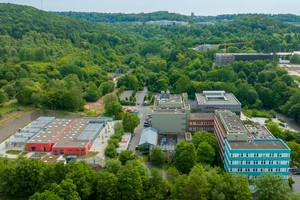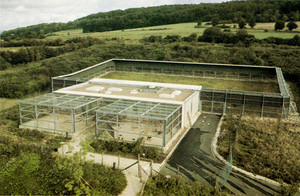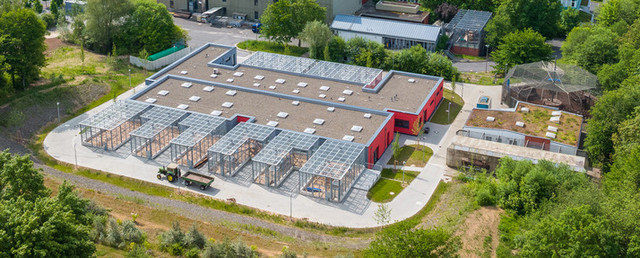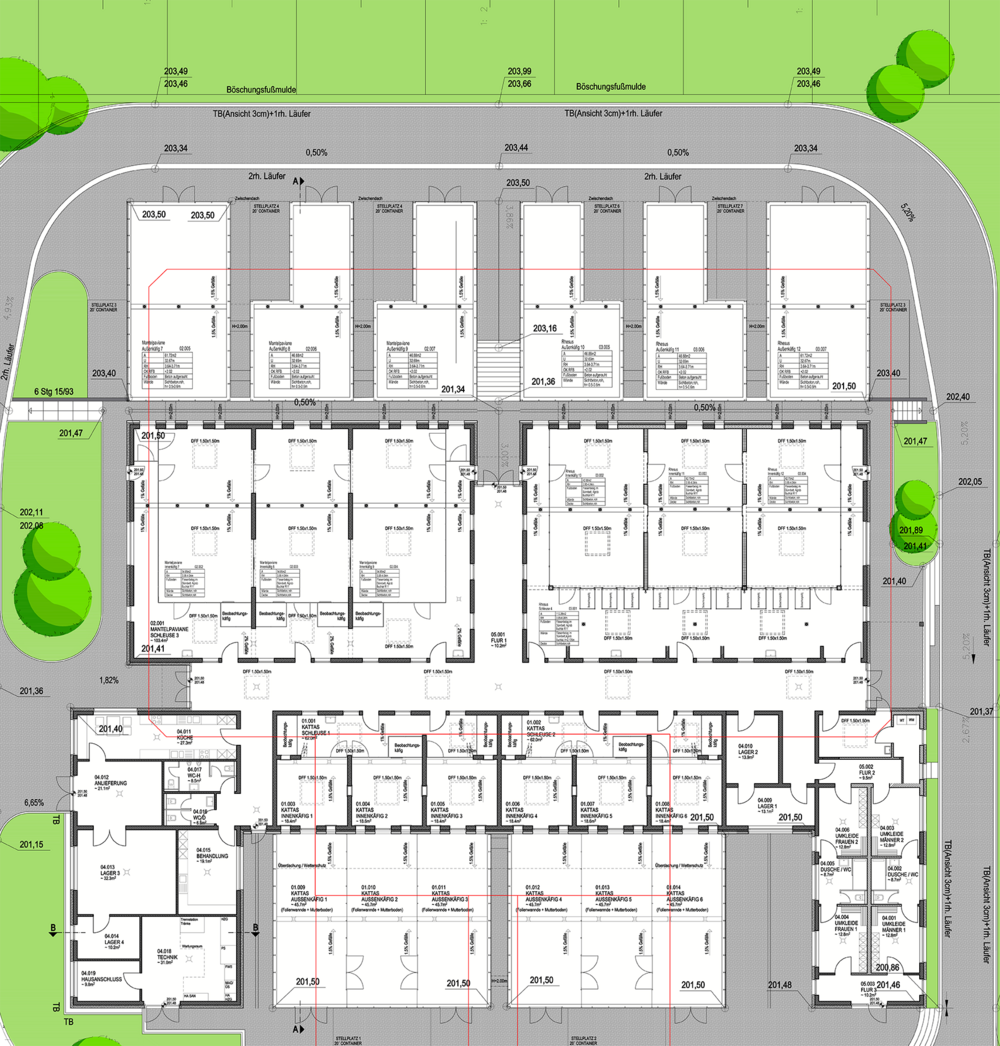Flexible, spacious, modern - the new animal enclosures at DPZ

As the old enclosure for lemurs and baboons at the DPZ was getting on in years, it was completely rebuilt starting in 2019. Now, in the summer of 2022, the new building is ready. A total of 12 units were created, each consisting of an outdoor unit and a connected indoor unit. The building cost around 6.5 million euros, of which the DPZ contributed 30 percent; the remaining 4.5 million euros were financed by the state of Lower Saxony and the federal government. Rhesus monkeys and hamadryas baboons are to move into the new enclosures.
PriCaB - Primate Cognition and Behavior
The name of the new research and husbandry building refers to the research possibilities the building offers. It was chosen analogously to the research building HuCaB (Human Cognition and Behavior), an interdisciplinary center for the study of human social cognition that is being built at the University of Göttingen.
Research and husbandry at the highest level
In addition to spaciousness, flexibility was the most important specification for the new building; after all, different types of primates in different group sizes are to be housed and observed in the enclosures. The 12 animal units, each consisting of an indoor and associated outdoor area, can be connected to each other in a modular fashion. In addition, interaction rooms can be retrofitted as needed, for example, to house measuring equipment.
The new building is significantly larger than the old one; in addition to heated indoor rooms for the animals, there are also changing rooms for animal caretakers and scientists as well as a food kitchen, treatment, storage and technical rooms. Two to four animal keepers will work in the new building every day, as well as scientists who, for example, will conduct behavioral observations or cognition tests with the animals.
The new building uniquely combines aspects of animal care and research with primates. Research questions can be investigated without the animals having to leave their social group. To this end, interaction systems are connected directly to the units or housed in interaction rooms installed next to the outdoor areas. A camera system, significantly supported by N-Bank, will be able to record behavioral data around the clock, which will be evaluated using novel analysis programs. An integrated facial recognition program will enable each animal in the group to be individually recorded and described in terms of its behavior, health and cognitive abilities. This is a hitherto unique approach to recording the health status of the animals on the one hand and obtaining important research data on the other. Thus, the new building also makes a significant contribution to animal welfare andimproved non-invasive observation methods in the sense of the 3Rs (Replace, Reduce, Refine).
From fall 2022, we will also be able to show the building to visitors as part of our public tours.
Relocation due to reconstruction

She moved in during the summer of 1980: The DPZ's first colony of hamadryas baboons. The 13 animals did not have far to go, they came from Frankfurt Zoo. At the end of 2019, some 40 years later, their enclosure was demolished and the group, which has now grown to around 50 animals, moved to the so-called "octagon", an enclosure just a few meters away. The ring-tailed lemurs and the black and white ruffed lemurs, which had been at the DPZ since 2004 and 2010, respectively, also had to move out; they were transferred to the Straußberg Monkey Forest, a zoo about 80 kilometers from Göttingen



